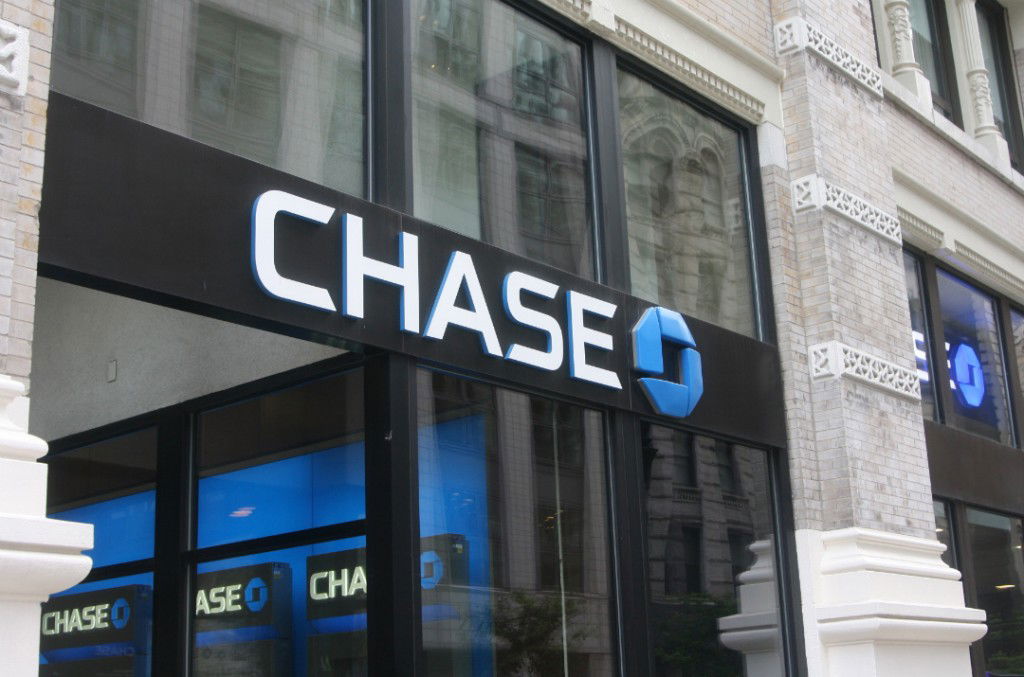As one of the world’s largest banks, JPMorgan Chase Bank offers an array of financial products to its customers. From checking and savings accounts to credit cards with robust rewards programs, the bank has a lot to offer. Additionally, the bank’s customer service department is among the best.
Chase also offers a range of consumer and business loans to help you finance major purchases in your life. If you’re considering purchasing a car or house or funding your college education, Chase has some great options for you.
But the one area where Chase currently falls short?
Personal loans.
Does Chase offer personal loans?
Unfortunately, the answer is no. As of this writing, Chase Bank does not offer personal loans to new or existing customers. It doesn’t even matter what your credit score is. So whether you’re looking for a bad credit loan or a good credit loan, Chase personal loans are not available at this time.
Where can you get a bad credit personal loan?
Some traditional banks and credit unions offer personal loans for borrowers with bad credit. However, one of the best options is online loan marketplaces. They allow you to receive multiple loan offers by completing a single application.
They also provide access to short-term financing opportunities for various credit types, and you won’t have to put up any collateral. The online loan marketplaces partner with online lenders offering unsecured personal loans.
Here are some personal loans from online lenders that are a good fit if you’re looking for an alternative to a Chase personal loan.
Chase Bank Personal Loan Alternatives
BadCreditLoans.com
BadCreditLoans.com offers personal loans in small amounts, starting as low as $500 and going up to $10,000. Your repayment period depends on the lender. Loan terms are from three months to five years.
MoneyMutual
MoneyMutual is an online matching service for small short-term personal loans with loan amounts of up to $5,000. Although it is not a direct lender, it can help you find the best lender for you.
PersonalLoans.com
Another option for a personal loan focused primarily on bad credit borrowers is PersonalLoans.com.

Which major banks offer personal loans?
Several major banks offer personal loans with varying terms and conditions. Here’s a quick look:
- Wells Fargo: Wells Fargo personal loans range from $3,000 to $100,000 with repayment terms of up to 84 months.
- U.S. Bank: U.S. Bank provides personal loans starting from $3,000, with instant approval and funds transfer for existing customers.
- PNC Bank: PNC Bank features both secured and unsecured personal loans with competitive rates.
- TD Bank: TD Bank offers unsecured personal loans from $2,000 to $50,000 and secured loans from $5,000 to $50,000, including an express loan option.
- Citibank: Citibank provides personal loans to its customers with amounts ranging from $2,000 to $50,000, with fixed rates and flexible terms.
Choosing the Best Personal Loan Lender
When choosing the best personal loan lender for your needs, there are several factors you should consider. Here are some tips on how to pick the best lender for you:
- Check credit score requirements: Every lender has its own minimum credit score requirements. Before you apply, ensure your credit score fits within the lender’s requirement range. Some lenders are more willing to work with borrowers who have low credit scores, while others cater to borrowers with excellent credit.
- Compare interest rates: The interest rate you’re offered can greatly affect how much you pay over the life of your loan. Look for lenders that offer the most competitive rates for your credit score range. Remember, a lower interest rate can help you save money in the long run.
- Consider fees: Besides the interest rate, you also need to take into account any fees the lender charges. These can include origination fees, late fees, and prepayment penalties. Such charges could increase the cost of your loan significantly, especially if the fees are high.
- Read reviews: Customer reviews can provide insight into a lender’s customer service and reliability. Look for reviews that focus on the application process, clarity of loan terms, and how the lender handles customer complaints.
- Consider the loan amounts and terms: Make sure the lender offers the loan amount you need and repayment terms that fit your budget. Some lenders offer only small loans, while others can lend much larger amounts. Similarly, some lenders offer only short-term loans, while others may offer terms that last several years.
What kind of Chase loan can you get?
You won’t be able to consolidate your credit card debt or finance your upcoming wedding with a Chase personal loan. However, other options are available to achieve your financial goals. Even if you have bad credit, there are plenty of ways to get the cash you need.
While Chase doesn’t offer personal loans, there are several loan types you can choose from. They offer auto loans, mortgages, and private student loans. If you need a loan in one of these areas, then Chase is a great option to explore.
The application process for these types of loans is typically longer than working with an online lender. But even within these three categories, there are plenty of options available to find the best pick. So let’s dig in to find out what you can expect when you apply for a Chase loan.
Auto Loans
Chase offers various services when it comes to financing your vehicle. In addition to getting a new auto loan, you can also refinance an existing loan. Plus, Chase has partnered with TrueCar to provide a car buying service directly through their website. So essentially, you get help with the process from start to finish.
Using Chase’s car-buying platform, customers who bought new cars averaged a savings of $3,086 off the MSRP. You can also find used cars at great prices. Once you’re ready to finance, you can get a personalized rate quote.
Here is the information you’ll need to supply:
- Type of vehicle (new or used)
- Year
- Vehicle make
- Your state of residence
- Estimated credit rating (excellent, very good, good, or fair)
- Loan amount
After you fill out the short form, you’ll receive an estimated interest rate and monthly payment amount so you can update your financial plan. If you’re already a Chase customer with some other type of account, you could qualify for a rate discount.
Chase does have a car loan limit:
You can only finance up to $100,000. Loan terms last between four and six years. You can contact a customer service representative to get a quote even if you don’t know what kind of car you want.
Mortgages
If you need a specific home loan product, chances are that Chase can help you get the right one. Even if you don’t live in one of the 22 states with a Chase branch, you can still use them as your mortgage lender.
Here are the types of mortgages offered by Chase:
Conventional, FHA, VA, and jumbo loans are all available. You can also choose between fixed and adjustable-rate mortgages, as well as a 15-year versus 30-year loan.
This broad range of loan types suit just about anyone’s needs. For example, if you live in California, even an average-priced home could be about the conventional limits. However, Chase can help you qualify for a jumbo loan.
An FHA loan may be a viable choice if your credit score is below the usual cut-off or you don’t have much saved up for a down payment. VA loans are great for military service members or veterans.
To help you weigh your options, take advantage of Chase’s team of home lending advisors. They’ll help you look at your financials and qualifications to see what kind of home loan is the best option.
Private Student Loans
With college tuition costing all but an arm and a leg, federal student aid often doesn’t cover the full cost of attendance. As a result, private loans comprise a large portion of today’s student loan debt, which are funded by private financial institutions like Chase.
While Chase Bank does provide financing for both federal and private student loans, the bank doesn’t do the actual servicing. That means you need to reach out to American Education Services (AES) for questions about student loans, whether current or potential.
Here’s the contact information for AES student loans:
Website: www.aesSuccess.org
Phone: 1 (800) 233-0557
Hours: 7:30 a.m. to 9:00 p.m. (ET), Monday through Friday
How to Apply for a Personal Loan
No matter which lender you choose, applying for a personal loan usually involves the same steps:
- Budgeting: The first step should always be calculating how much you need to borrow, and factoring in monthly payments with your overall budget. Getting clear on your numbers will make finding the best loan for you much easier.
- Prequalification: You can benefit from prequalification tools with many online lenders, just make sure they won’t take a hard inquiry on your credit. Prequalification is the best way to get a clear picture of the market and rates available to you.
- Compare offers: Prequalification also allows you to negotiate various offers against each other. Take the time to compare all the best offers you’ve found and verify your loan terms and conditions carefully.
- Finalize & sign: Once you’ve decided on a loan and been approved, you’ll need to sign a loan agreement. Loan funds are usually sent by direct deposit and can be available within five business days.
Alternatives to Personal Loans
After doing your research on Chase personal loan alternatives, you may decide that it just isn’t the right time for you to borrow money in this way. Plus, a personal loan may not be the best option for your current needs or situation. There are plenty of further alternatives to personal loans, however, including:
- Credit card: A credit card can allow you to make purchases and repay them at your convenience, with interest. For those who do not meet the minimum credit score requirement for a personal loan, credit cards may be a better option. But, of course, interest rates will be higher. You’ll also have to stay under your credit limit, but for smaller purchases a credit card could be a smart alternative.
- Personal line of credit: A personal line of credit allows borrowers access to funds as and when needed, from within a specified credit line. They often come with lower interest rates compared to a credit card. You also only pay interest on what you use, but there are also additional fees to watch out for.
- P2P loan: An increasingly popular alternative to traditional personal loans, peer-to-peer loans involve connecting with an investor via a reputable online loan platform. This can be a great alternative for those with fair credit.







